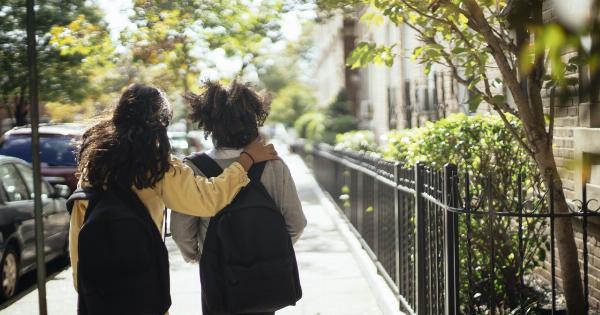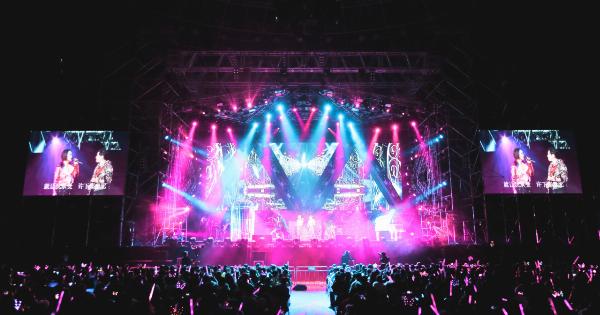The field of medical science continues to witness remarkable breakthroughs that have the potential to revolutionize healthcare.
One such milestone in scientific innovation is the successful production of a faultless artificial cornea, which has the potential to restore vision for millions of people around the world. The cornea plays a crucial role in focusing light onto the retina, enabling clear vision. When the cornea becomes damaged or diseased, it can lead to severe vision impairment or even blindness.
Until recently, the only option for restoring vision in such cases was through corneal transplants, which often faced several limitations. However, with the advent of artificial corneas, a new era of possibilities has emerged in the field of ophthalmology.
The need for artificial corneas
Corneal transplantation, also known as keratoplasty, has been the standard treatment for severe corneal damage or disease for many years. During a corneal transplant, a healthy cornea from a donor is surgically implanted to replace the damaged cornea.
However, there is a global shortage of corneal donors, and the procedure itself carries the risk of complications such as graft rejection and infection. Moreover, the success rate of corneal transplants depends on factors such as the availability of suitable donors and the compatibility of the transplanted cornea with the recipient’s immune system.
These limitations have led scientists and researchers to explore alternative solutions.
The breakthrough: Artificial corneas
The development of artificial corneas has opened up new possibilities for individuals with corneal damage or disease.
Artificial corneas, also known as keratoprostheses or corneal implants, are designed to recreate the functions of the natural cornea and restore vision. These devices are usually made of biocompatible materials that can be safely inserted into the eye.
Artificial corneas eliminate the need for corneal donors, reducing the waiting time for patients and increasing the overall success rate of the procedure.
The quest for perfection
The production of a faultless artificial cornea has been a challenge due to the complex structure and functions of the natural cornea.
The cornea is responsible for both protection and vision, requiring a delicate balance of transparency, strength, and compatibility with the surrounding tissues. Scientists have spent years trying to replicate these qualities in artificial corneas, and recent advancements have brought us closer to achieving this goal.
Advancements in materials and manufacturing
One crucial aspect of developing a faultless artificial cornea is the choice of materials. The ideal material should be transparent, biocompatible, and durable enough to withstand the constant stresses within the eye.
Advances in materials science have led to the discovery and development of new biomaterials that meet these requirements. Specially engineered polymers, such as biocompatible plastics and hydrogels, have shown promising results in both laboratory and clinical settings.
In addition to advancements in materials, manufacturing techniques have also played a significant role in the production of faultless artificial corneas.
Three-dimensional (3D) printing technology has emerged as a powerful tool for creating complex structures with high precision. By utilizing 3D printing, researchers can customize the size and shape of artificial corneas to fit individual patients, ensuring a better fit and overall success of the procedure.
Bioengineering and regenerative medicine
Bioengineering and regenerative medicine approaches have also contributed to the production of faultless artificial corneas.
Tissue engineering techniques involving the use of stem cells and scaffolds have shown promise in growing functional corneal tissues. By harnessing the regenerative abilities of stem cells, scientists have been able to develop lab-grown corneal tissues that closely mimic the structural and functional characteristics of natural corneas.
These advancements hold great potential for creating artificial corneas that can seamlessly integrate with the surrounding tissues and restore vision more effectively.
Overcoming the challenges
Developing a faultless artificial cornea involves overcoming several challenges. The first and foremost is ensuring the biocompatibility of the materials used. The artificial cornea should not cause any adverse reactions or complications within the eye.
Extensive biocompatibility testing is conducted to ensure the safety and effectiveness of these devices.
Another challenge is mimicking the complex structure and functions of the cornea. The natural cornea is composed of multiple layers, each with unique cellular arrangements and functions.
Replicating this complexity in an artificial cornea requires a comprehensive understanding of corneal biology and careful engineering of the device.
Further challenges include ensuring long-term durability and stability of the artificial cornea within the eye. The device should be able to withstand the constant movements of the eye and maintain its shape, transparency, and performance over time.
Ongoing research and iterative improvements are necessary to address these challenges and achieve faultless artificial corneas.
The future of artificial corneas
The production of a faultless artificial cornea marks a significant milestone in scientific innovation.
As advancements continue to be made in materials science, manufacturing techniques, bioengineering, and regenerative medicine, the future of artificial corneas looks promising. These devices have the potential to provide a simple and effective solution for individuals suffering from corneal damage or disease, eliminating the need for corneal transplants and their associated limitations.
Moreover, the development of faultless artificial corneas opens up possibilities for other applications, such as enhancing the vision of individuals with naturally healthy corneas.
Through artificial corneas, researchers may be able to address common vision problems such as nearsightedness, farsightedness, and astigmatism with greater precision and efficacy.
Conclusion
The production of a faultless artificial cornea marks a groundbreaking achievement in the field of medical science. This milestone brings hope to millions of individuals suffering from vision impairment due to corneal damage or disease.
By combining advancements in materials science, manufacturing techniques, bioengineering, and regenerative medicine, scientists have made significant strides towards developing artificial corneas that closely mimic the structure and functions of natural corneas. As research and innovation continue, artificial corneas may become the preferred option for restoring vision, paving the way for a future where visual impairments are no longer a hindrance to leading a fulfilling life.






























